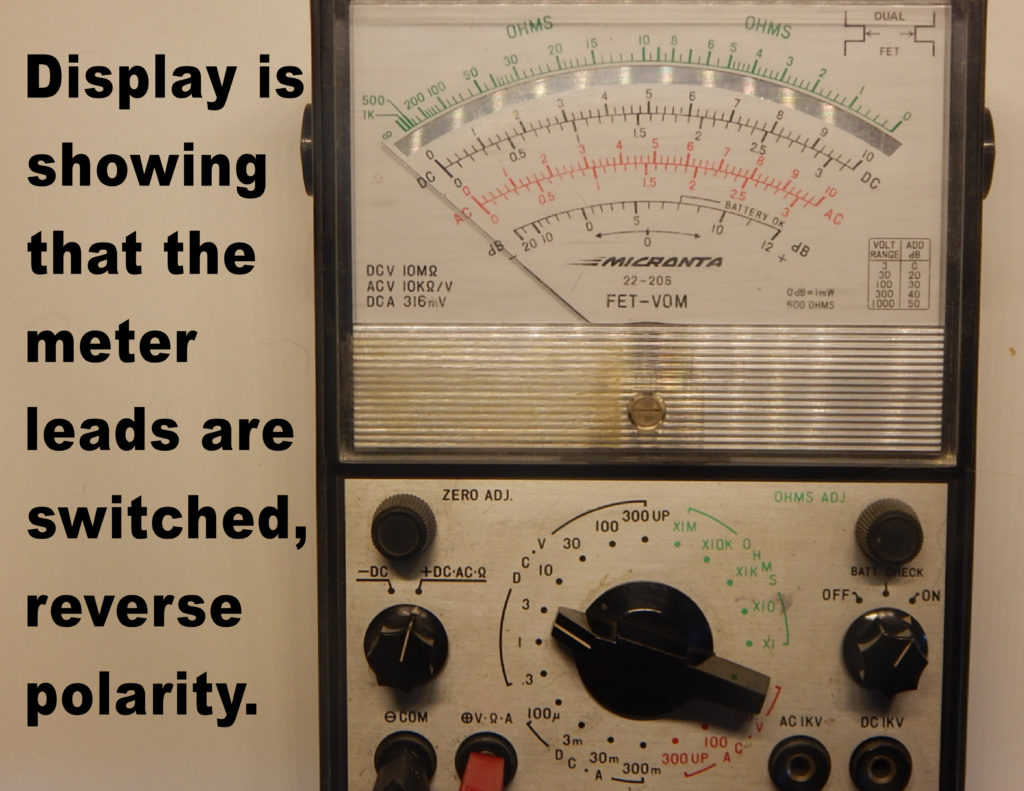
TEK NET
The Henderson Amateur Radio Club is pleased to present our Tek Net every Sunday evening, starting at 8pm local time (0300 UTC).
The audio portion of the Tek Net will be found on the Henderson Amateur Radio Club Repeater Network (RF). The audio may also be accessed via Echolink (W7HEN-R node 740644) and Allstar (node 44045).
The audio will refer to this page, so that the listener can more fully understand the concepts as they are presented.
All are welcome!
August 6, 2023
“Multimeters, what they are and how to use them”
Thank you Gene for requesting tonight’s Tek Net topic.
Multimeters, as the name suggests is an instrument that has the capabilities of several different meters built into one housing or enclosures. As shown below there are many types and price ranges.
From a few dollars to hundreds and into the thousands for scientific and specialized meters.

This meter costs in the price range of $4.95 at Harbor Freight and at times is a free gift to Harbor Freight customers.
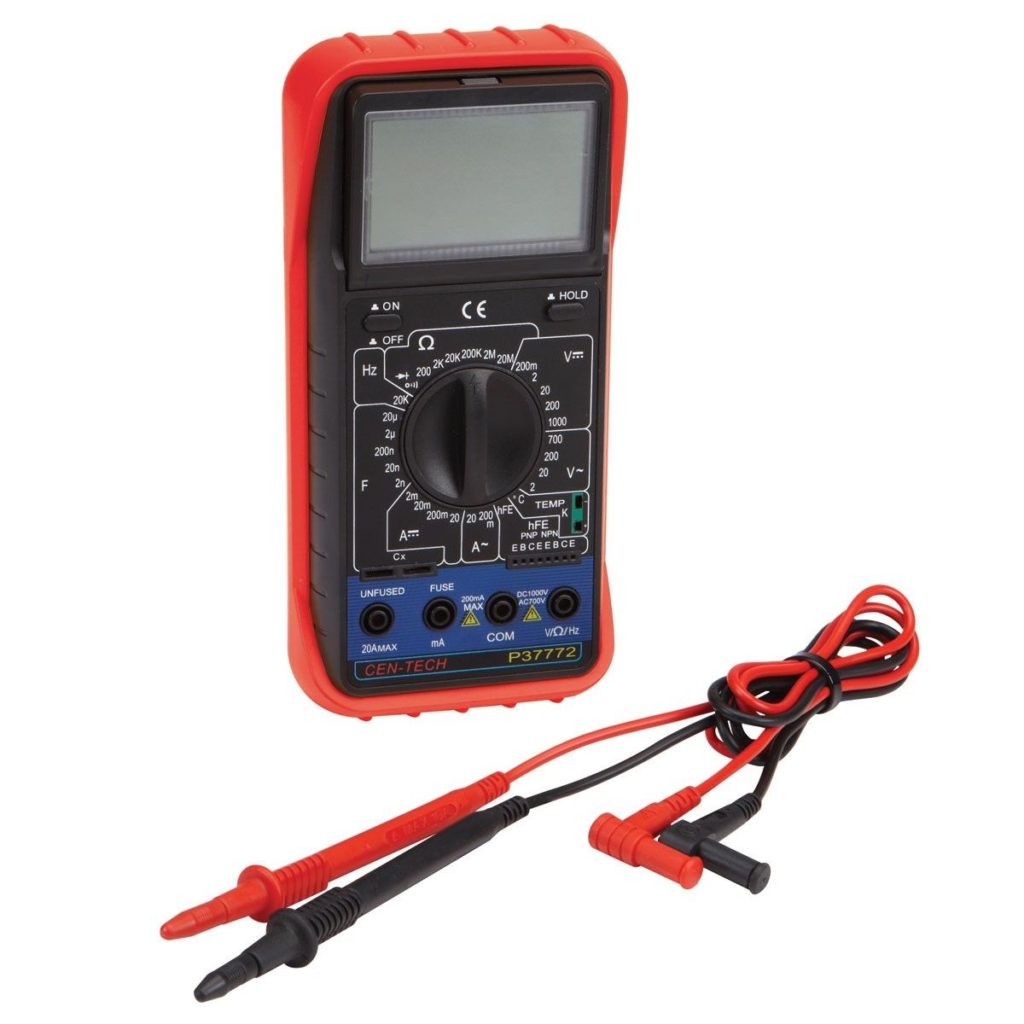
This Harbor Freight model goes for $20.00 and is one of my favorites. I’ve had one for about 8 years and it still keeps on working, after being dropped way too many times then I care to think about.

This is a Simpson Model 260. This was the industry standard when it came to multi meters prior to digital meters.
Every radio technician was familiar with this meter and most shops had at least one of these work horses.
The case was made of a thick Bakelite composition and could handle the rough duty of a field technician.
Once in a while when the case would actually break a little super glue and the 1/4″ thick pieces went back together just fine.
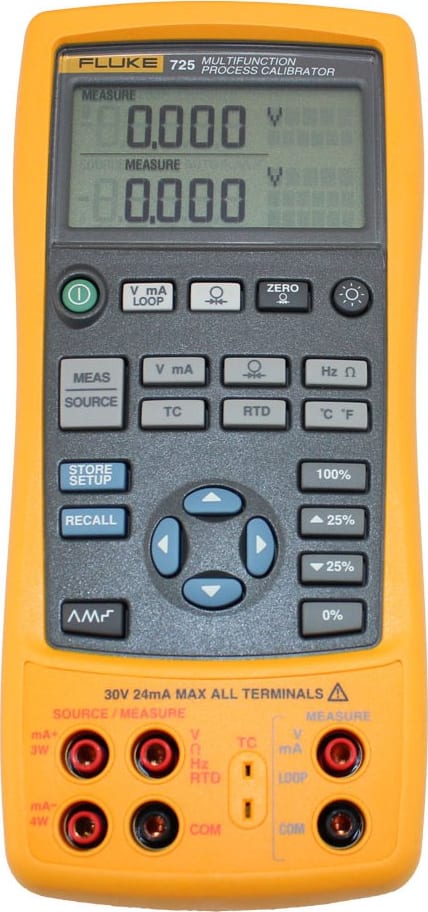
This particular FLUKE model 725 has a computer interface built in and is designed for scientific applications, it costs a mere $3,497.00.
What I’m trying to show is that the cost of a multi meter is like any other tool that you may have or use on a regular basis. There’s going to be many factors to consider.
Its up to your judgement as to how much your meter should cost.
Things to consider that affect the units price are: size of the display, how many decimal points are shown, the ohm’s per volt loading effect, the different limit on ranges, additional functions ( like reading capacitor value, or temperature or a transistor checker), is the meter protected (easily to get to fuses) in the current ranges, durability of the instruments case or enclosure etc.
My personal experience in the past has shown that they all do a fairly good job at the basic requirements, reading voltage, resistance, and current, many times I have compared readings with other meters and saw a few millivolt difference.
In the application being used, millivolts may be critical, again it’s all in what you are using the meter for.
I have had the above units excluding the Fluke 725, however I did have an earlier Fluke series ( $1,997.00) many years ago and I couldn’t see any difference at times between the multi meters readings.
What are some of the uses of a typical multimeter?
* DC voltages when checking a battery or power supply output.
* Checking the charging voltage that your car’s alternator produces.
* Checking the AC voltage at an outlet in your home.
* Determining what AC voltages an unmarked transformer is producing.
* Measuring the ohms of a resistor or potentiometer.
* Checking the voice coils of a speaker.
* Checking a fuse or lamp to see if it is open.
* Measuring the current that a circuit is drawing from its power source.
* Measuring the charging current to a battery being charged.
* Use as a continuity checker with an audible tone.
Alright, lets put this meter to work.
If you have ever gone out to your car and turned the key and it didn’t start, that’s not something we look forward to.
But we can use a multi meter to tell you if the battery can take and hold a charge or if you need to replace your alternator as shown below.
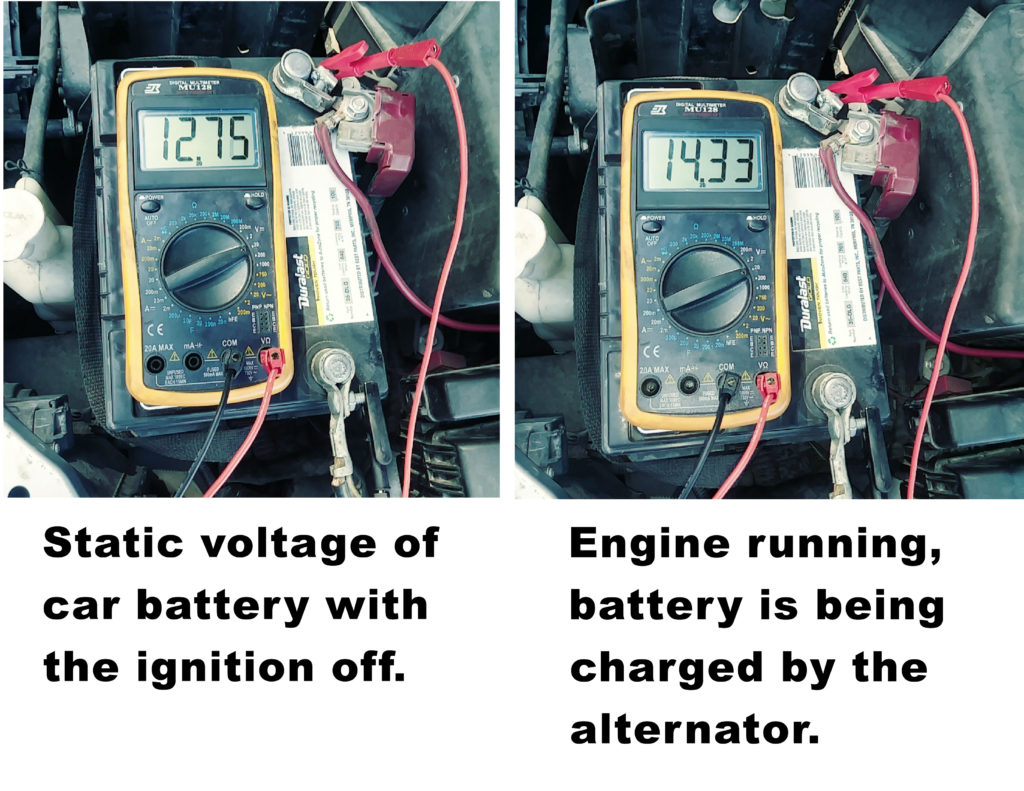
As we can see above, I put a charge on the battery and it appears to be holding the correct voltage. With the engine running I can see that the alternator is producing charge current meaning the alternator is ok.
If the voltage stayed the same or was lower after starting the car, that would indicate that the alternator is damaged and needs to be replaced.
The Ohm meter function
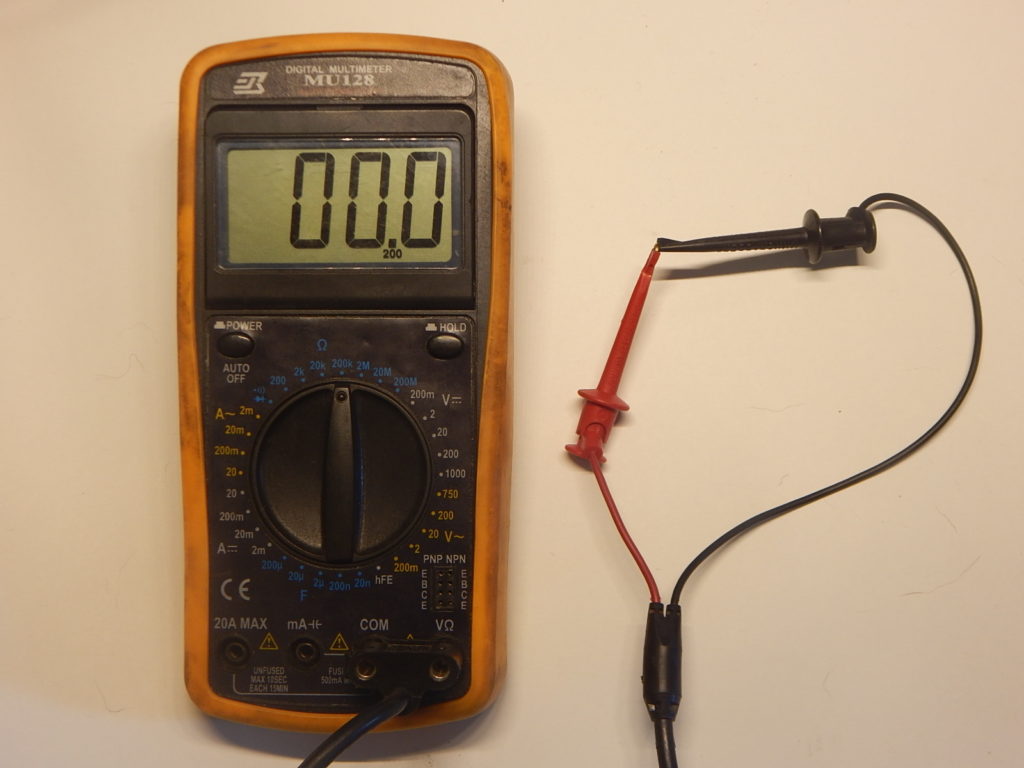
If your measuring a known resistor value, first short your leads on the range scale that you are using to verify that the instrument will “Zero out”, digital meters normally do this automatically, where you have to manual zero the meter with an analog type meter.
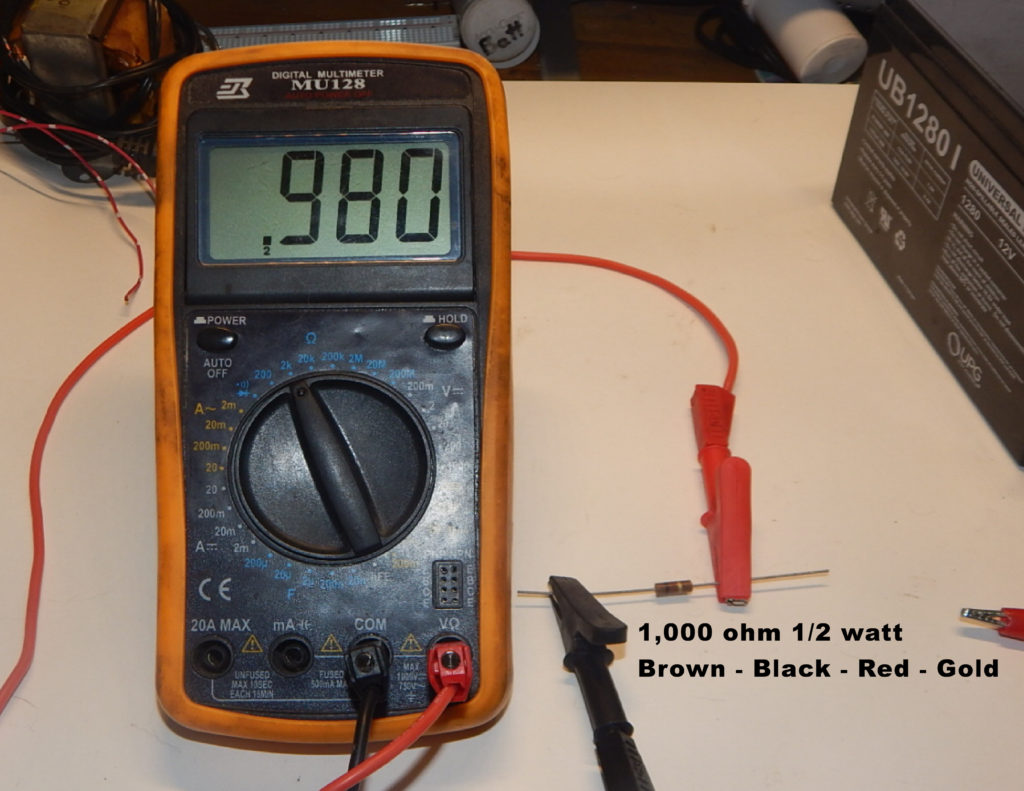
This 1000 ohm resistor is displaying 980 ohms which is well withing the 5% range ( 950 ohm ) for this resistor. Resistor values can vary between manufacturers and also from off-shore vendors.
Depending on the way the resistor is being used in the circuit a wide value may not be that big a deal for its application.
Using it as a Volt meter
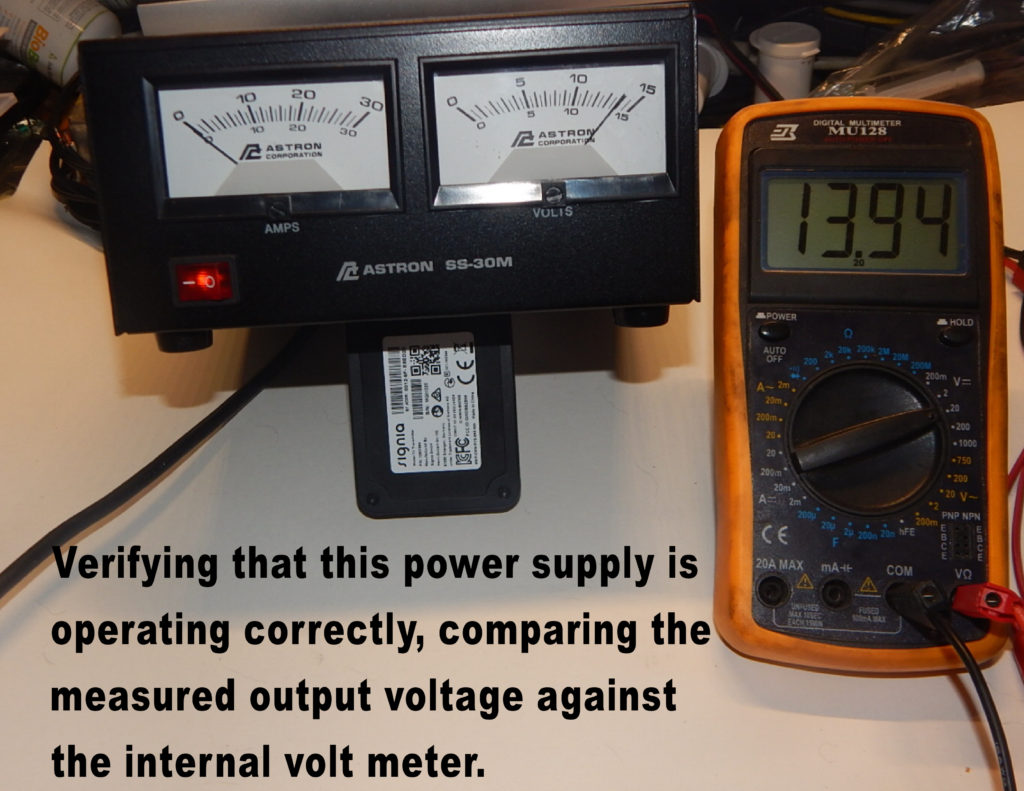
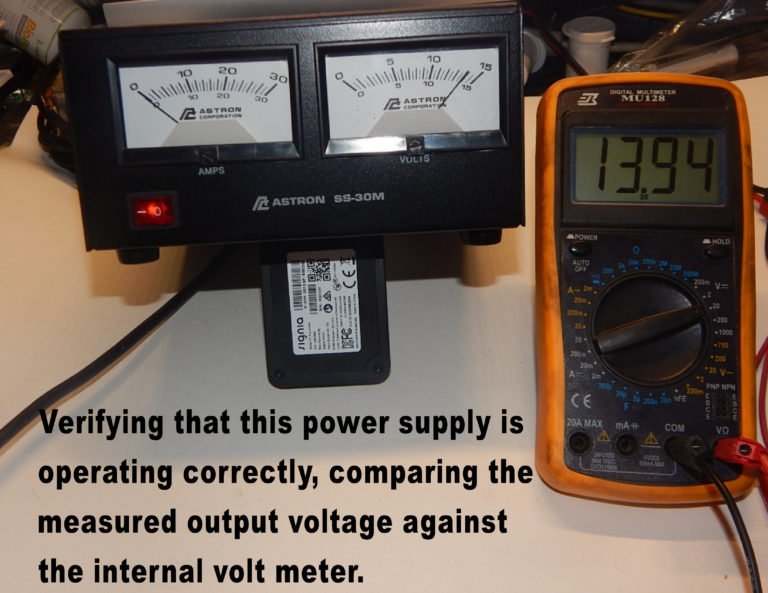
Sometimes its not easy to read the lines on a meter, if you are wanting to set a precise voltage on a power supply.
Here we can verify with our digital meter what this power supply is producing and make any internal adjustments easily and accurately.
Measuring Current function
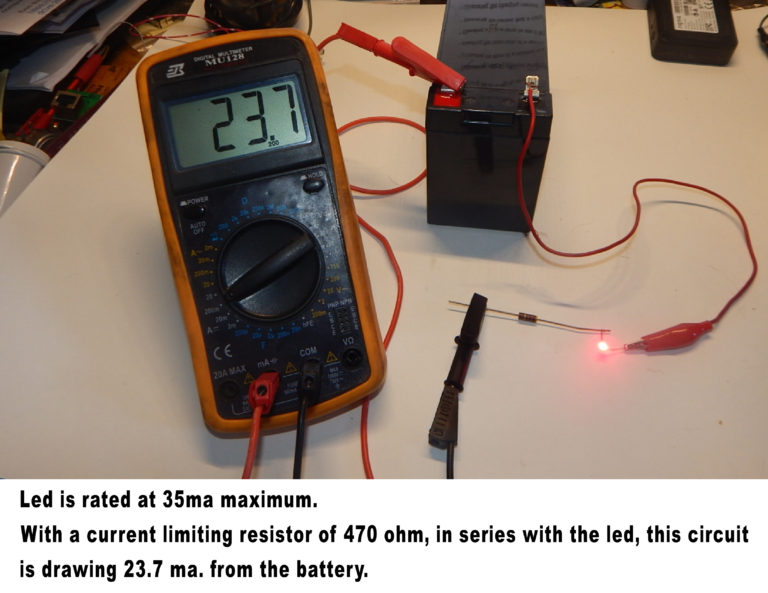
To measure current in any DC circuit, set the meter to the highest current range so as to not damage the meter, then reduce the range as you take your first measurement until you have a correct reading.
ALWAYS connect the meter’s Positive lead to the source voltage with the positive potential.
Then connect the Negative lead from the meter to the device under test positive connection, for example a radio’s Positive RED lead.
The Negative or ground lead of the radio should be connected to ground or the negative connection point.
The negative of the LED is clip leaded to the battery’s Negative terminal.
As shown to the left, the current of this LED under test from a 12 Volt battery is 23.7 Ma, well below the maximum current rating for this LED.
Meter lead placement
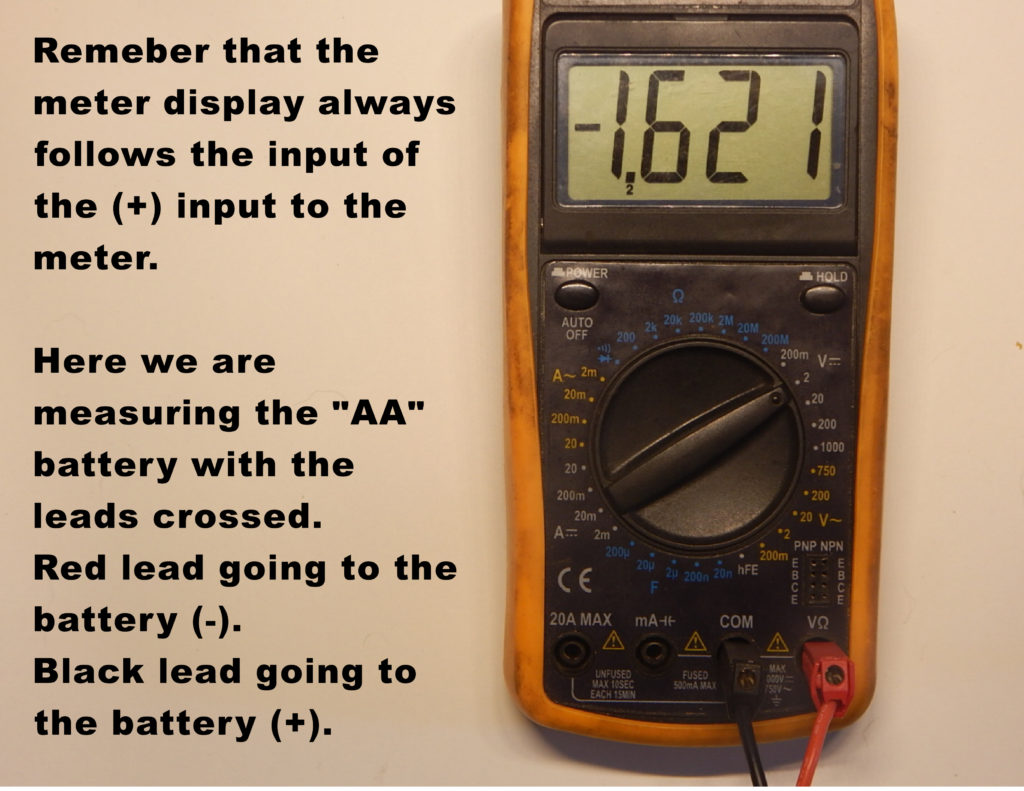
When I say lead placement, I mean the placement of the RED or positive input to the meter.
The display always follows the positive leads connection as displayed to the left.
The meter is connected to a “AA” battery backwards, RED lead to the battery (-) and the meter’s Black or Negative lead to the battery’s Positive terminal so you still get an accurate measurement of voltage but notice the Negative sign in front of the voltage displayed
